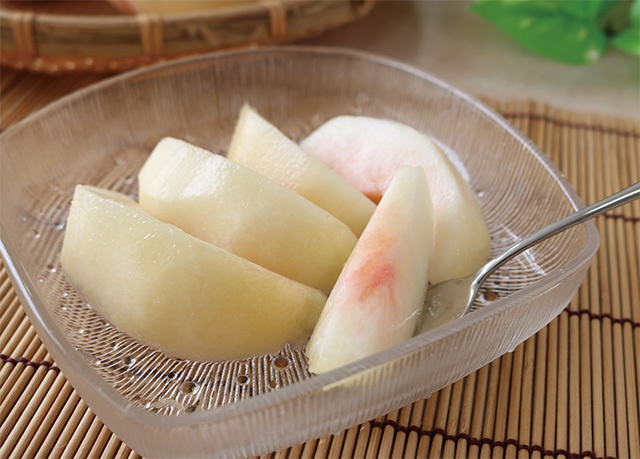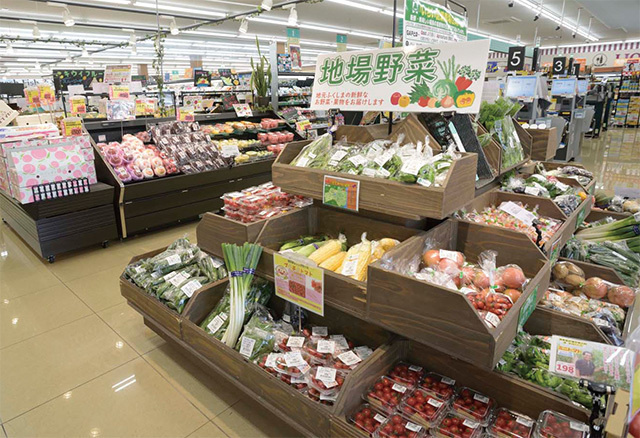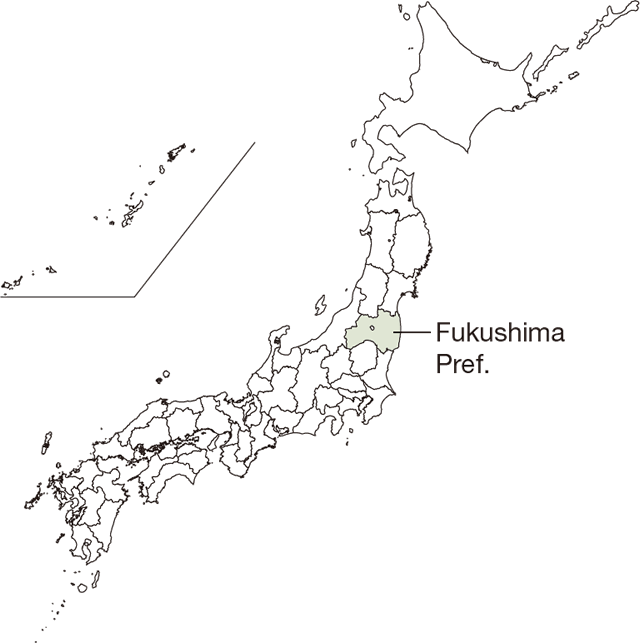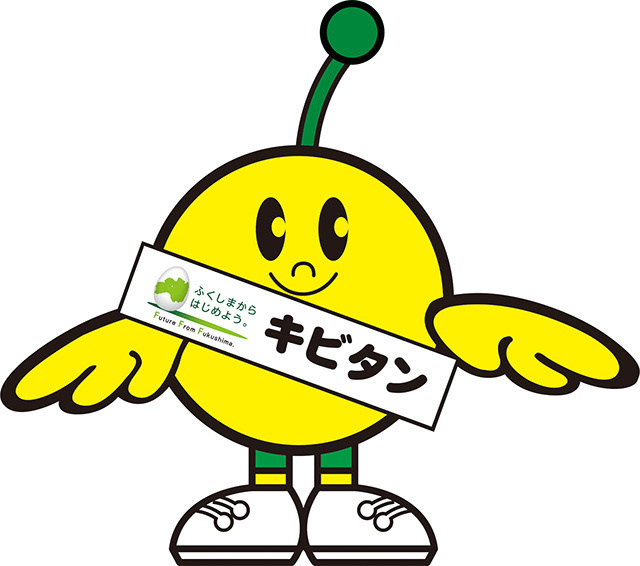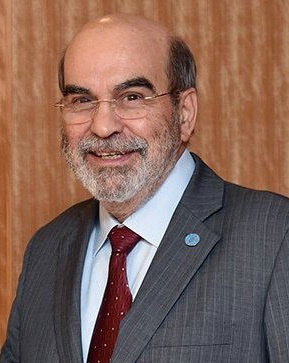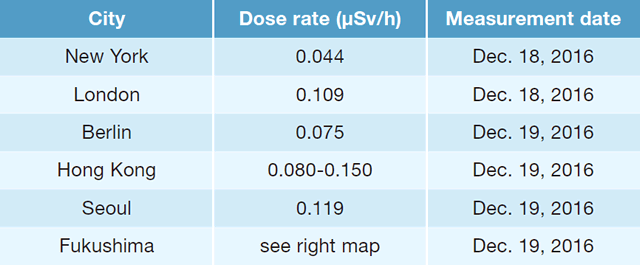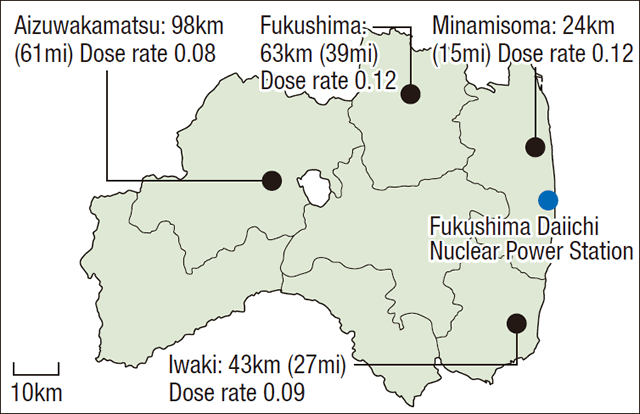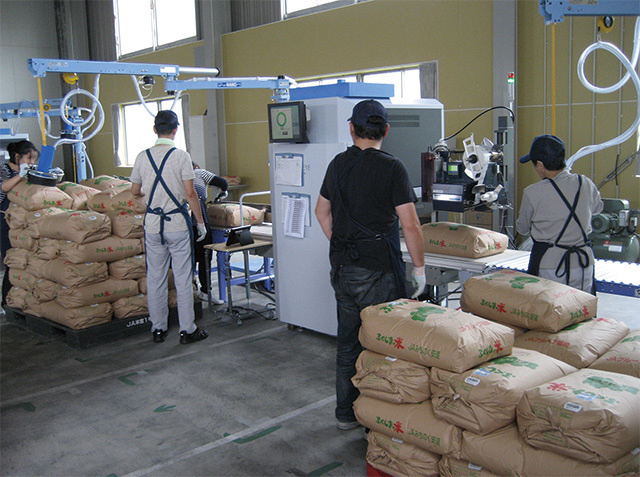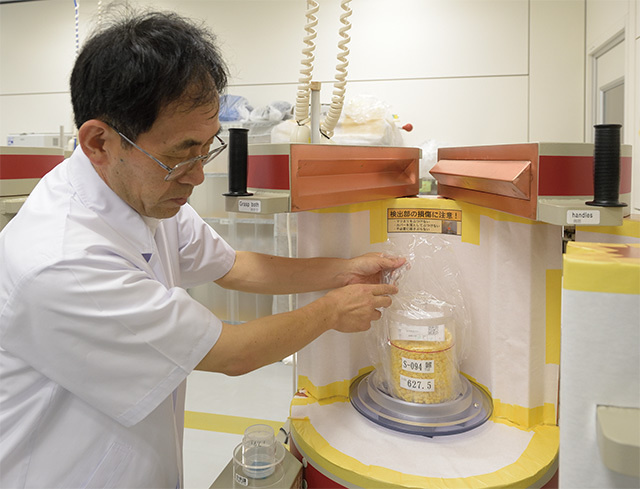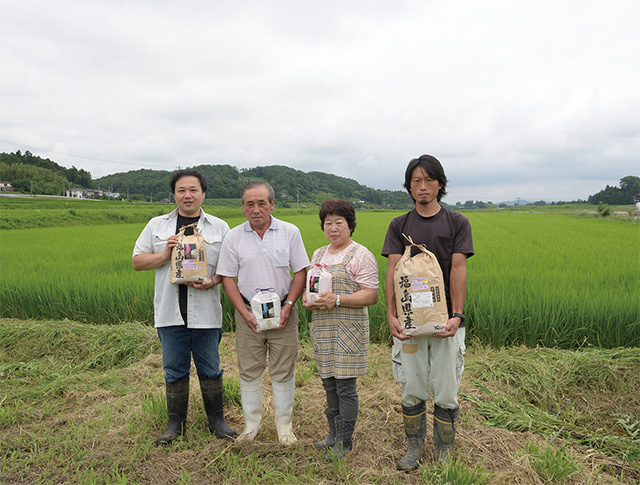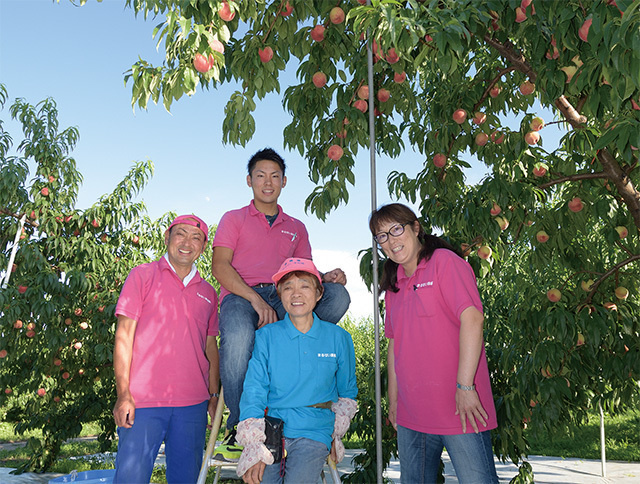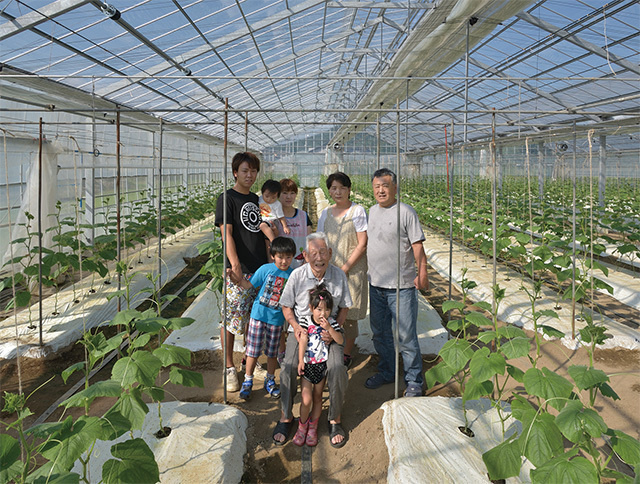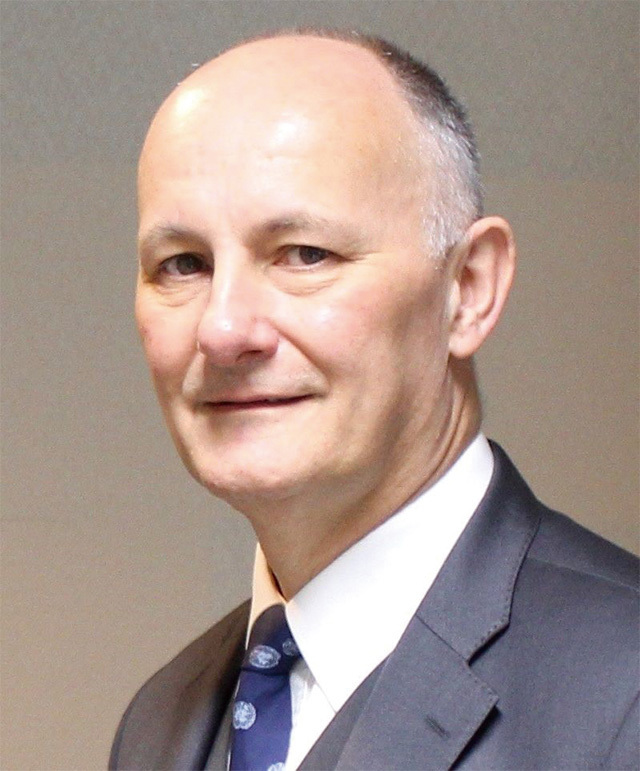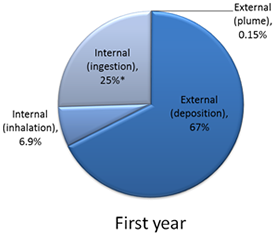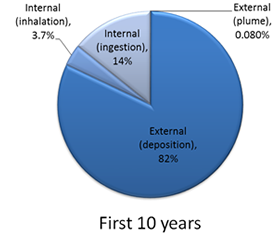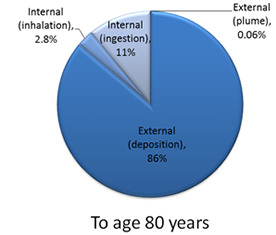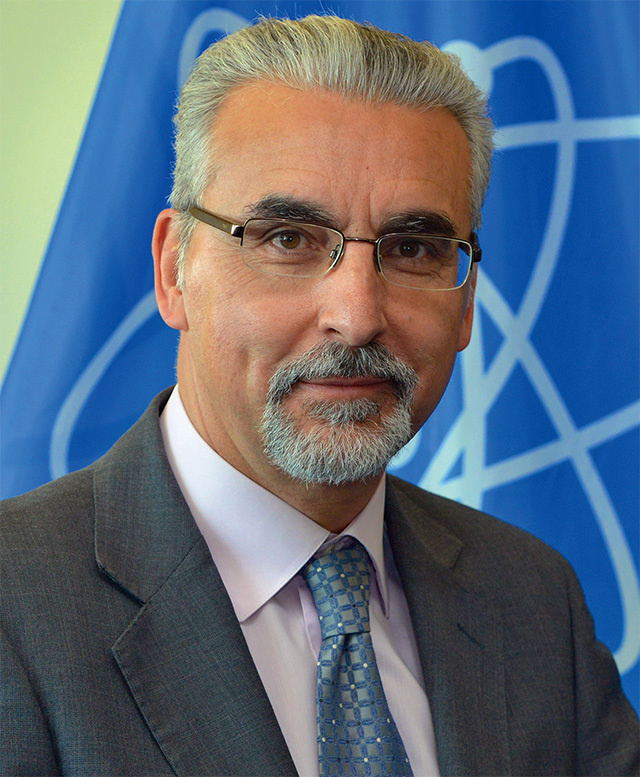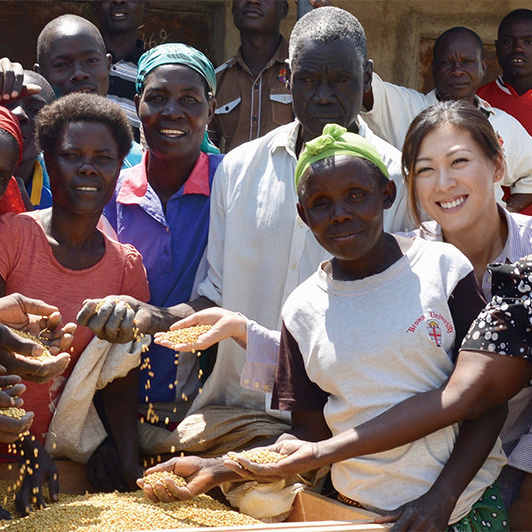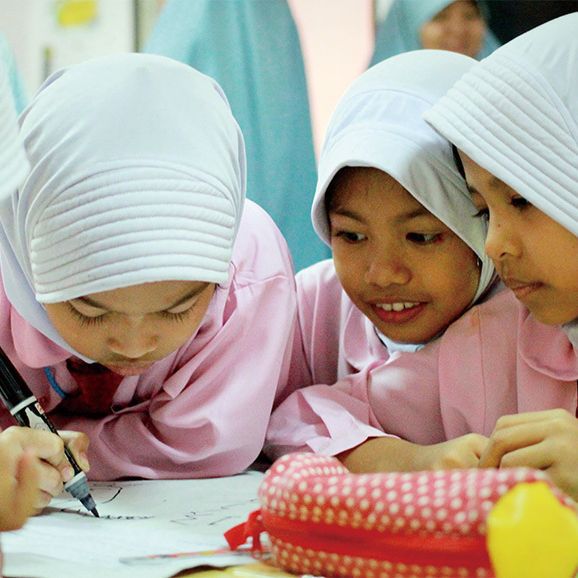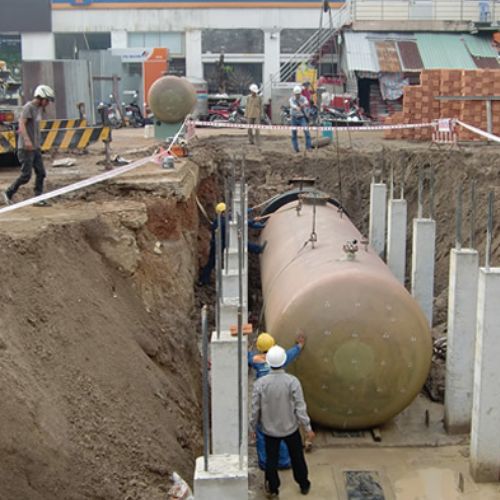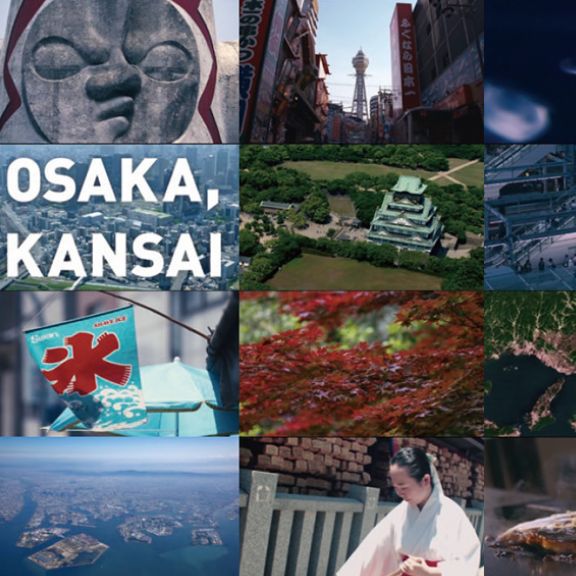Six years have passed since the 2011 Great East Japan Earthquake, and the prefecture of Fukushima is making steady progress in its reconstruction and revitalization. Fukushima has long been famous for its agriculture, known since old times as one of Japan’s premier rice-growing regions, and also earning the nickname “The Fruit Kingdom.” Fukushima’s agriculture suffered drastically after the earthquake and the nuclear power accident that followed, but as a result of thorough safety measures implemented through national efforts, foods produced in Fukushima have been recognized as safe by the FAO (Food and Agriculture Organization of the United Nations), as well as by many individual countries, and the prefecture’s exports are increasing. Japan hopes that more and more people will enjoy the safe and delicious foods from Fukushima in the years to come.
Fukushima Foods: Safe and Delicious
Director-General of the Food and Agriculture Organization of the United Nations (FAO) supports Japan’s efforts to ensure food safety in Fukushima
The latest assessment of the food safety situation in Fukushima by the Joint FAO/IAEA Division* (May 2017) reports that “measures [taken by the Japanese authorities] to monitor and respond to issues regarding radionuclide contamination of food are appropriate, and that the food supply chain is controlled effectively by the relevant authorities.” In support of this assessment, Dr. José Graziano da Silva, Director-General of FAO, who participated in the Fukushima Sweets Tasting Event held publicly in Tokyo on 10 May 2017 during his visit to Japan, commended the Government of Japan for being “very supportive and very transparent in the face of this situation” and reassured that “we don’t see any reason to raise concern about the safety of food [from Fukushima].”
*FAO and IAEA have the Joint FAO/IAEA Division, which regularly assess the food safety situation in Fukushima, based on the information provided by the Government of Japan.
Q&A
 In 2011, Fukushima experienced a nuclear power accident. Is it safe to eat foods from Fukushima?
In 2011, Fukushima experienced a nuclear power accident. Is it safe to eat foods from Fukushima?


 What is the scientific basis for asserting that food from Fukushima is safe to eat?
What is the scientific basis for asserting that food from Fukushima is safe to eat?


 Are people eating foods from Fukushima?
Are people eating foods from Fukushima?


FOOD EXAMINATION
Through multi-layer examinations for radioactive substances at each phase of production and distribution, Japan is enforcing a system in which only agricultural products that are confirmed to be safe are shipped.
During the production phase in particular, the Fukushima Agricultural Technology Centre conducts thorough and detailed examinations of agricultural products to be shipped and distributed, with 11 staff operating 11 germanium semiconductor detectors at full capacity. Furthermore, for rice, the staple food of the Japanese people, all volume and all bags of rice are swiftly examined using approximately 200 belt conveyor–type radioactive cesium concentration detectors installed in the various production districts throughout the prefecture.
In all examinations of Fukushima Prefecture rice, fruits, and vegetables in the 2016 fiscal year, none exceeded the standard level of 100 Bq/kg established by the Japanese government.
MESSAGES FROM FARMERS
Rice:
“Fukushima is a beautiful place, known as the ‘land of water.’ Because of its rich supply of excellent water, the land produces great rice and great sake! Please visit, eat and discover Fukushima! Our rice is delicious! And safe, of course!”
The Goto family grows rice in Motomiya City, Fukushima, and they experienced a drastic decline in sales after the earthquake. They found that they could no longer rely on their old way of thinking, that “Fukushima rice is so good that it needs no advertising,” so they started a website to publicize the various safety measures they’re taking to reassure customers. The Goto family also welcomes everyone to visit and see the safety of its rice in person, offering hands-on farm tours and operating a farm-inn, which are receiving highly favorable reviews from customers.
Fruits:
“To reassure people around the world that our fruits are safe, we’ve earned JGAP and Global G.A.P. safety certifications. Come visit our orchard and pick some fruit for yourself!”
The Sato family orchard is located in Iizaka, Fukushima City. After the earthquake, the Sato family participated in numerous seminars regarding food safety and has made many efforts to demonstrate the safety of its fruit. For example, they put their focus on earning JGAP certification, which is only given to those who undergo yearly third-party evaluation of food safety and environmental protection and meet the necessary criteria. At present, the Sato family’s entire farmland is JGAP certified. Their apples and persimmons have also achieved international “Global G.A.P.” certification, and they are preparing to acquire this certification for their peaches, grapes, and pears in time for the 2017 fall harvest as well.
Vegetables:
“Please try our delicious cucumbers! They’re grown in a safe environment in greenhouses in the spring and fall, and they’re juicy on the inside and crunchy on the outside.”
The Saito family grows cucumbers in Okajima, Fukushima City. Before the earthquake they also grew other vegetables, which were so highly regarded that they were even sold at high-end grocery stores in Tokyo. But after the quake, the family decided to focus on cucumbers exclusively, in order to better manage their cultivation. Using information gathered all over Japan, the Saito family is actively exploring new farming methods, including soil improvement. They are also ensuring the utmost safety by taking measures such as only purchasing fertilizer that has been examined for radioactive cesium and other hazards.
CONTRIBUTED MESSAGES
Mr. Malcolm Crick, Secretary, United Nations Scientific Committee on the Effects of Atomic Radiation (UNSCEAR):
The United Nations Scientific Committee on the Effects of Atomic Radiation (UNSCEAR) is a committee of the United Nations composed of scientific experts nominated by 27 Member States. Following the accident at the Fukushima Daiichi nuclear power plant, the Committee decided to initiate a two-year assessment of the levels and effects of exposure to radiation resulting from the accident. Its findings were published in April 2014 as the UNSCEAR 2013 report.
In general, because the doses following the accident were low, cancer rates are accordingly not expected to be significantly elevated due to radiation exposure of the population affected by the accident. One of the reasons seems that prompt precautionary restrictions on foodstuffs at the accident have contributed substantially to reduction of internal exposure.
While more information will become available in the future and some details may change, the Committee does not expect the overall picture to change dramatically. The results of the reviews of relevant scientific literature published by the end of the year 2016 will be published as the 2017 white paper on the Committee’s website at www.unscear.org.
Mr. Juan Carlos Lentijo, Deputy Director General of the Department of Nuclear Safety and Security, International Atomic Energy Agency (IAEA):
The IAEA has conducted several missions related to the Fukushima Daiichi NPS accident at the request of Japanese authorities. On food, based on the information that has been made available, the IAEA and the FAO understand that measures to monitor and respond to issues regarding radionuclide contamination of food are appropriate, and that the food supply chain is controlled effectively by the relevant authorities. Our assessment is that the measurements of caesium radionuclide levels in foodstuffs, together with appropriate regulatory action and public communication such as the publication of monitoring results, help maintain confidence in the safety of the food supply. The revisions and updates of food restrictions in line with the results of food sampling and monitoring indicates the continued vigilance of the authorities in Japan and their commitment to protecting consumers and trade.
The close cooperation between Japan and the IAEA has contributed to Fukushima’s ongoing recovery. The IAEA is ready to continue supporting Japan and Fukushima Prefecture at the request of Japanese authorities.


























